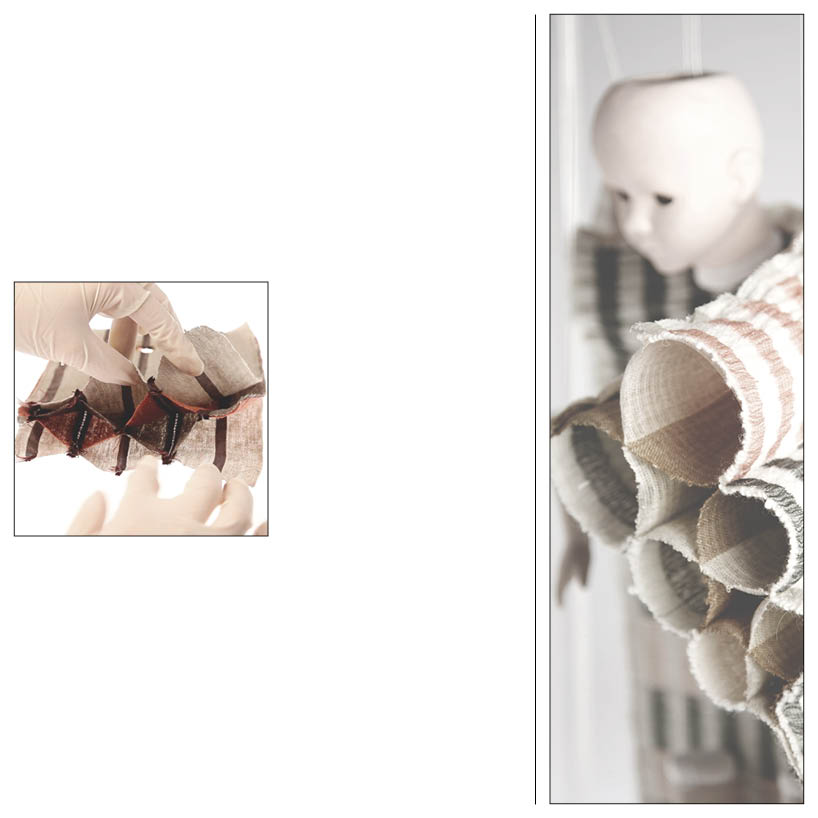
Interfaces: the future of woven structures, tactile and spatial properties. by l.beauvert from uk
designer's own words:
Interfaces: the future of woven structures, tactile and spatial properties.
An interface defines any surface acting between two portions of material or space; it is the dispositive of interaction, both a tool and a layer that connects two systems.
In the field of Textile Design, this project aims to create woven interfaces to link the anatomical body to its surrounding world by challenging the traditional principles of perpendicular tension. Assuming that both the environment and the body are living organisms, their interfaces must be endowed with flexible properties, measured in the 3rd but also the 4th dimension. The cloth is no longer a flat surface; within the technical constraints of a craft practice, it becomes an effective mass of lines with a great potential of adaptability.
From the samples, models and graphic studies already produced around this concept, I would develop a series of woven pieces drawing an analysis of deconstruction, challenging scales, structures, textures. It will show the progressive evolution from the 2d plan to the 3d fabric. The purpose of the outcomes is to engage with the patterns of human gestures during the design process and to demystify the elaboration of this process.
The textile designer's artillery, focusing on the weaving tools, will be the main technique of production. Even though, the future of woven structures relies here on the extension pulling it toward spatial skills and methods. Unusual materials such as rubber, plaster and steel will also expand the properties of warp and weft.
It is such combinations, crossing borders between disciplines, that are significant in the future development of the design field.
volume of fabric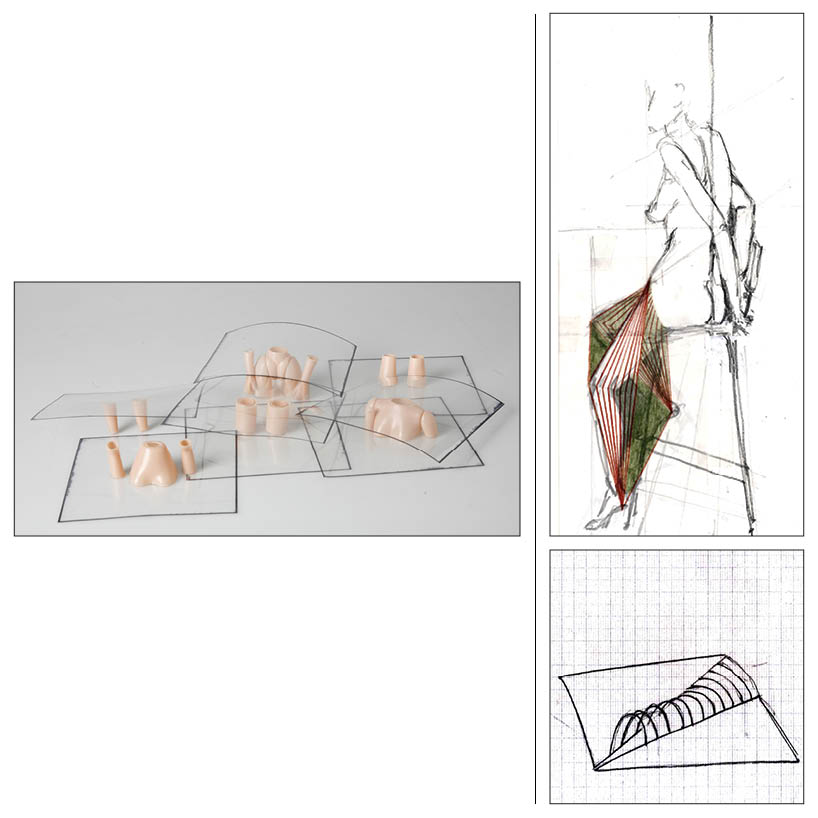
living perimeter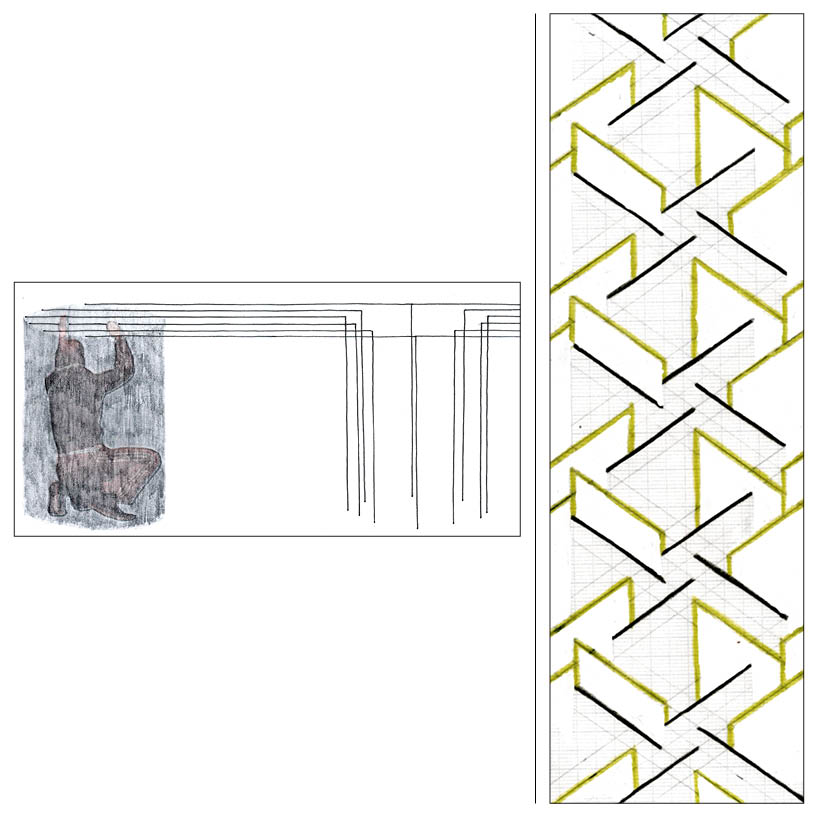
perpendicularity X, Y, Z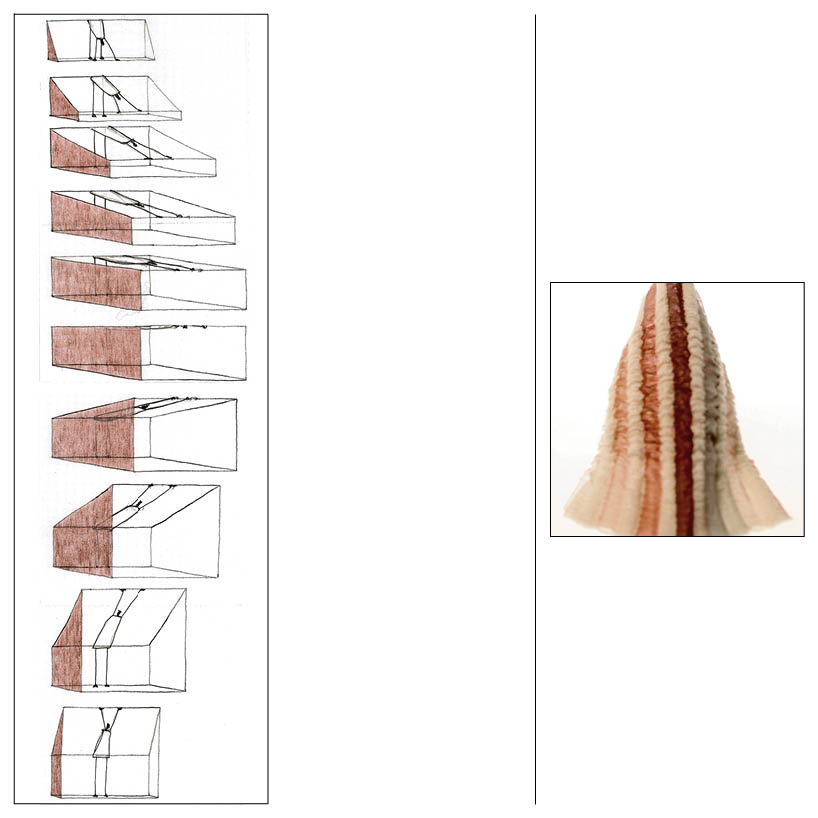
stretching space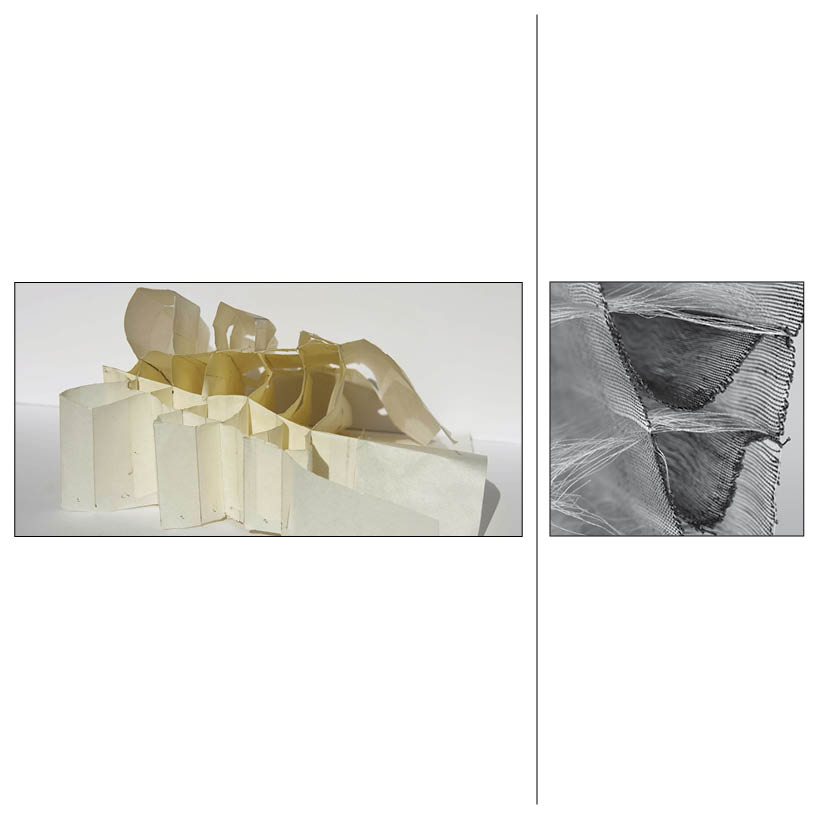
pleats elevation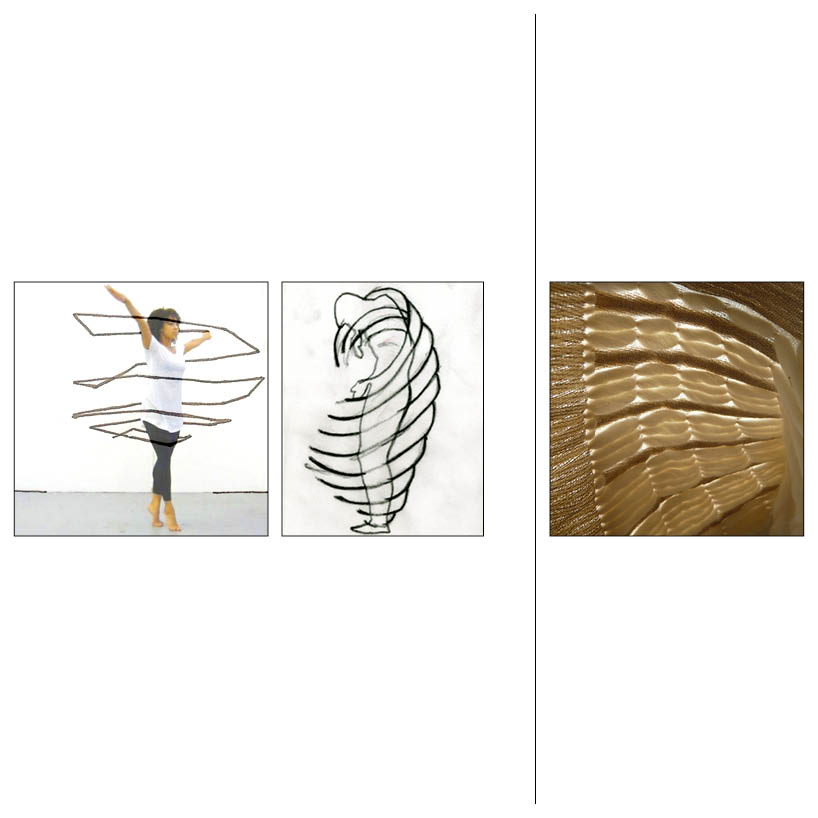
patterns of human gestures